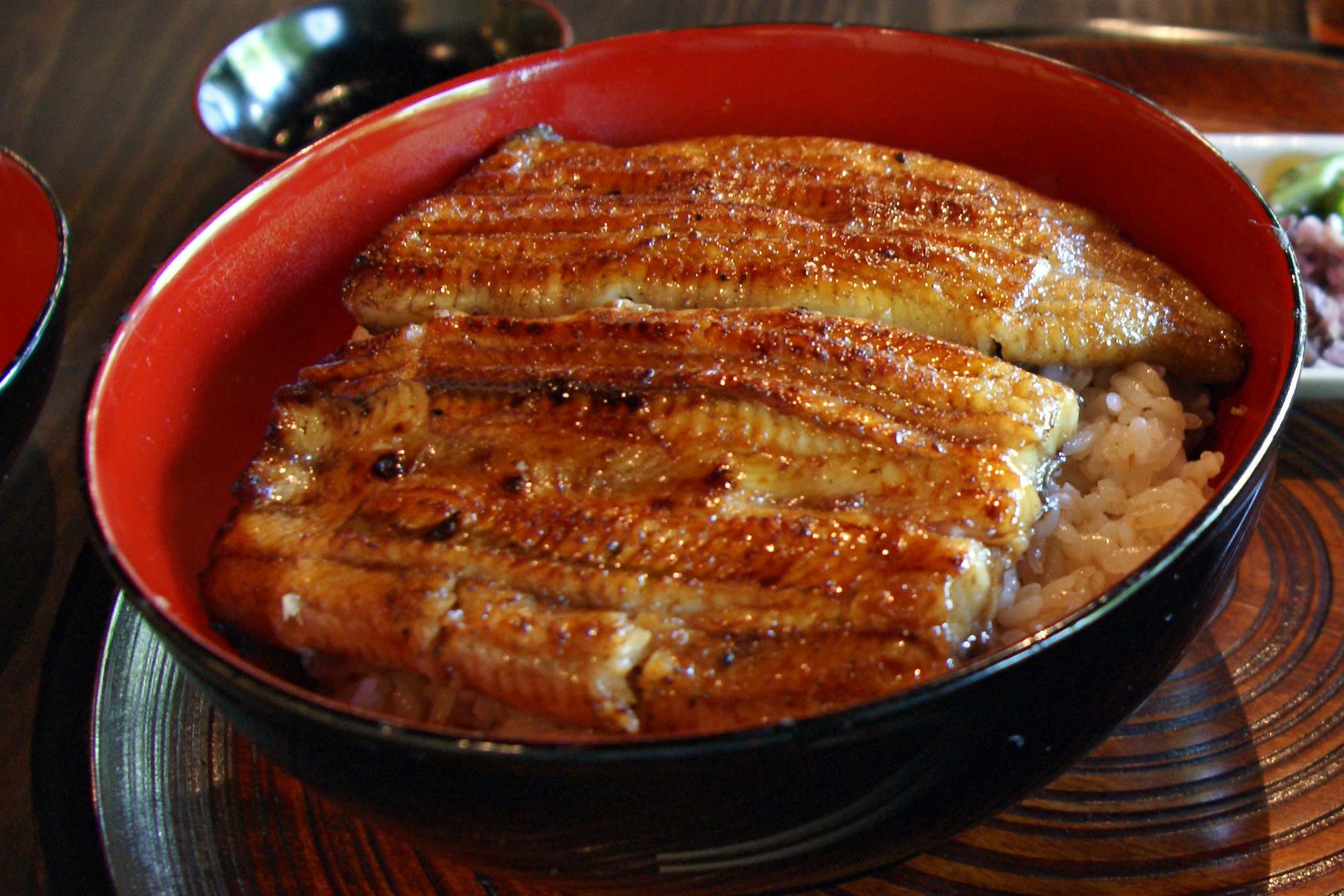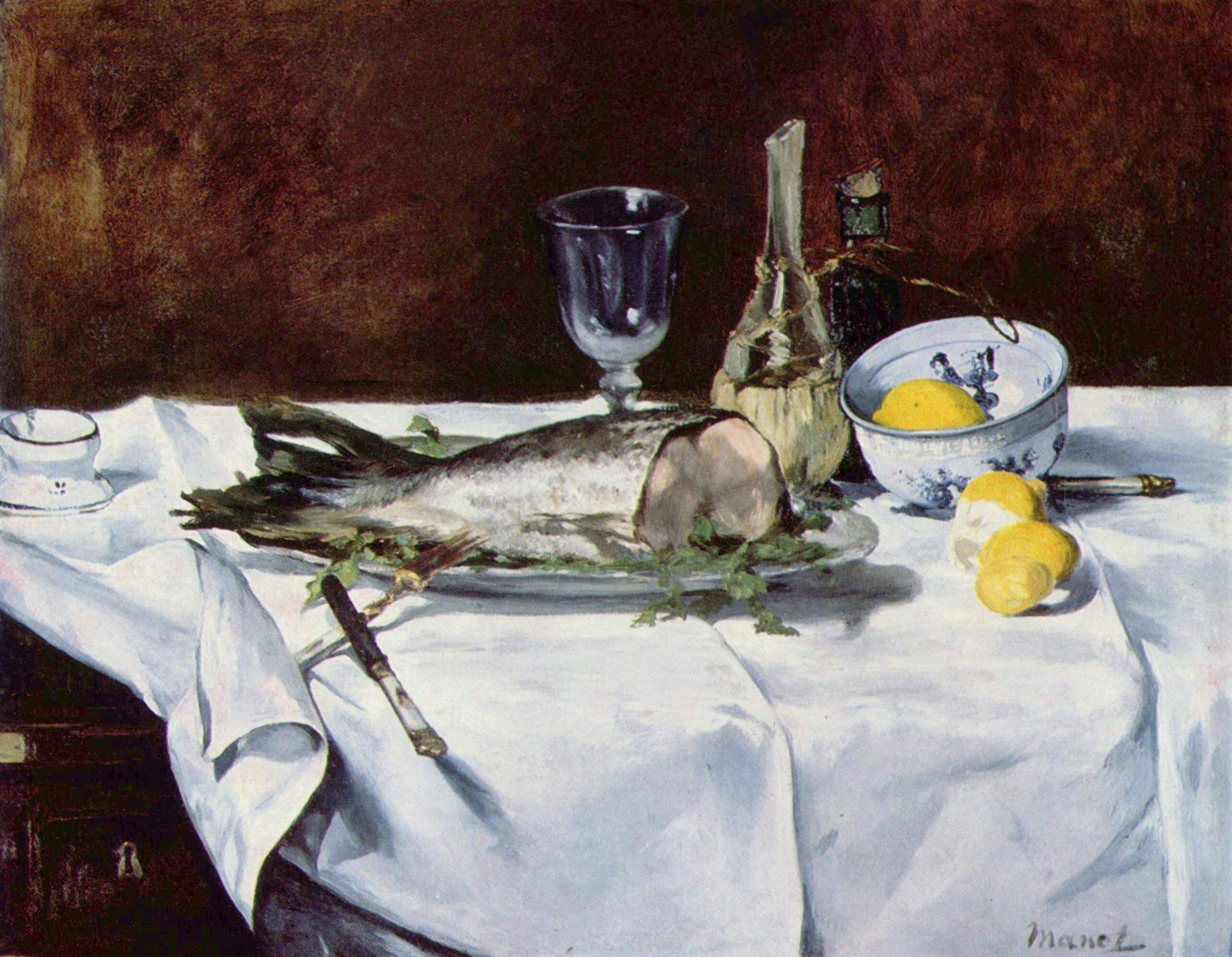|
Oyakodon
, literally "parent-and-child donburi", is a ''donburi'', or Japanese rice bowl dish, in which chicken, egg, sliced scallion (or sometimes regular onions), and other ingredients are all simmered together in a kind of soup that is made with soy sauce and stock, and then served on top of a large bowl of rice. The name of the dish is a poetic reflection of both chicken and egg being used in the dish. History The origins of the dish are unknown. The earliest written mention of the terms "oyako" and "don" in combination is in a newspaper advertisement for a restaurant in Kobe in 1884. The advertisement mentions dishes named ''oyakojōdon, oyakonamidon'' and ''oyakochūdon,'' possibly referring to different sizes. Variations Several other Japanese dishes pun on the parent-and-child theme of ''oyakodon''. , literally "stranger bowl", is otherwise identical but replaces the chicken with beef or pork. A dish of salmon and salmon roe served raw over rice is known as (salmon parent-child d ... [...More Info...] [...Related Items...] OR: [Wikipedia] [Google] [Baidu] |
Donburi
is a Japanese "rice-bowl dish" consisting of fish, meat, vegetables or other ingredients simmered together and served over rice. ''Donburi'' meals are usually served in oversized rice bowls which are also called ''donburi''. If one needs to distinguish, the bowl is called and the food is called . The simmering sauce varies according to season, ingredients, region, and taste. A typical sauce might consist of ''dashi'' (stock broth) flavored with soy sauce and ''mirin'' (rice wine). Proportions vary, but there is normally three to four times as much ''dashi'' as soy sauce and ''mirin''. For '' oyakodon'', Tsuji (1980) recommends dashi flavored with light soy sauce, dark soy sauce, and sugar. For ''gyūdon'', Tsuji recommends water flavored with dark soy sauce and ''mirin''. Donburi can be made from almost any ingredients, including leftovers. Varieties of donburi Traditional Japanese ''donburi'' include the following: ''Gyūdon'' , is a Japanese dish consisting of a bow ... [...More Info...] [...Related Items...] OR: [Wikipedia] [Google] [Baidu] |
Gyūdon
, also known as , is a Cuisine of Japan, Japanese dish consisting of a bowl of rice topped with beef and onion, simmered in a mildly sweet sauce flavored with ''dashi'' (Bonito, fish and Kelp, seaweed stock), soy sauce and ''mirin'' (sweet rice wine). It may sometimes also be served with toppings such as raw or soft poached Egg as food, eggs, ''Allium fistulosum, negi'' onions, grated cheese or kimchi. A popular food in Japan, it is commonly eaten with ''beni shōga'' (pickled ginger), ''shichimi'' (ground chili pepper), and a side dish of miso soup. History After the Buddhism in Japan, arrival of Buddhism in Japan in the 6th century, consumption of meat became rare in Japanese culture (especially those of four-footed animals such as beef, cattle or pork, pigs) and in many cases frowned upon, both for religious and practical reasons. It was only after the Meiji Restoration in 1868 and the subsequent westernization of the country that meat began to be widely eaten. ''Gyūdon ... [...More Info...] [...Related Items...] OR: [Wikipedia] [Google] [Baidu] |
Katsudon
is a popular Japanese food, a bowl of rice topped with a fried tonkatsu pork cutlet, egg, vegetables, and condiments. The dish's name is a portmanteau of the Japanese words ''tonkatsu'' (pork cutlet) and ''donburi'' (rice bowl). Preparation The tonkatsu for the katsudon dish is prepared by dipping the cutlet in flour, followed by egg, then dipping in panko breadcrumbs, and deep-frying. Next, into a boiling broth of dashi, soy sauce and onions, the sliced tonkatsu and a beaten egg is cooked. * The PDF text misses the egg-dipping step before breading the meat. The video does demonstrate it. * videoTonkatsu & Katsudon recipe * web page linking to the video and PDFExperience Japanese Home Cooking Variants Other bowls, made of cutlet and rice but without eggs or stock, may also be called ''katsudon''. Such dishes include: * ''sōsu katsudon'' (sauce katsudon): with tonkatsu sauce or Worcestershire sauce, from regions such as Fukui, Kōfu, Gunma, Aizuwakamatsu and Komagane * ''d ... [...More Info...] [...Related Items...] OR: [Wikipedia] [Google] [Baidu] |
Scallion
Scallions (also known as green onions and spring onions) are edible vegetables of various species in the genus ''Allium''. Scallions generally have a milder taste than most onions. Their close relatives include garlic, shallots, leeks, chives, and Allium chinense, Chinese onions. The leaves are eaten both raw and cooked. Scallions produce hollow, tubular, green leaves that grow directly from the bulb, which does not fully develop. This is different to other ''Allium'' species where bulbs fully develop, such as commercially available onions and garlic. With scallions, the leaves are what is typically chopped into various dishes and used as garnishes. Etymology and naming The names ''scallion'' and ''shallot'' derive from the Old French ''eschalotte'', by way of ''eschaloigne'', from the Latin ''Ascalōnia caepa'' or "Ascalonian onion", a namesake of the ancient Eastern Mediterranean coastal city of Ascalon. Other names used in various parts of the world include spring onion ... [...More Info...] [...Related Items...] OR: [Wikipedia] [Google] [Baidu] |
Poetry
Poetry (from the Greek language, Greek word ''poiesis'', "making") is a form of literature, literary art that uses aesthetics, aesthetic and often rhythmic qualities of language to evoke meaning (linguistics), meanings in addition to, or in place of, Denotation, literal or surface-level meanings. Any particular instance of poetry is called a poem and is written by a poet. Poets use a variety of techniques called poetic devices, such as assonance, alliteration, Phonaesthetics#Euphony and cacophony, euphony and cacophony, onomatopoeia, rhythm (via metre (poetry), metre), and sound symbolism, to produce musical or other artistic effects. They also frequently organize these effects into :Poetic forms, poetic structures, which may be strict or loose, conventional or invented by the poet. Poetic structures vary dramatically by language and cultural convention, but they often use Metre (poetry), rhythmic metre (patterns of syllable stress or syllable weight, syllable (mora) weight ... [...More Info...] [...Related Items...] OR: [Wikipedia] [Google] [Baidu] |
Kobe
Kobe ( ; , ), officially , is the capital city of Hyōgo Prefecture, Japan. With a population of around 1.5 million, Kobe is Japan's List of Japanese cities by population, seventh-largest city and the third-largest port city after Port of Tokyo, Tokyo and Port of Yokohama, Yokohama. It is located in the Kansai region, which makes up the southern side of the main island of Honshu, Honshū, on the north shore of Osaka Bay. It is part of the Keihanshin metropolitan area along with Osaka and Kyoto. The Kobe city centre is located about west of Osaka and southwest of Kyoto. The earliest written records regarding the region come from the , which describes the founding of the Ikuta Shrine by Empress Jingū in AD 201.Ikuta Shrine official website – "History of Ikuta Shrine" (Japanese) [...More Info...] [...Related Items...] OR: [Wikipedia] [Google] [Baidu] |
Beef
Beef is the culinary name for meat from cattle (''Bos taurus''). Beef can be prepared in various ways; Cut of beef, cuts are often used for steak, which can be cooked to varying degrees of doneness, while trimmings are often Ground beef, ground or minced, as found in most hamburgers. Beef contains protein, iron, and vitamin B12. Along with other kinds of red meat, high consumption is associated with an increased risk of colorectal cancer and coronary heart disease, especially when processed meat, processed. Beef has a high Environmental impact of meat production, environmental impact, being a primary driver of deforestation with the highest greenhouse gas emissions of any agricultural product. In prehistoric times, humans hunted aurochs and later domesticated them. Since that time, numerous beef cattle, breeds of cattle have been Selective breeding, bred specifically for the quality or quantity of their meat. Today, beef is the third most widely consumed meat in the world, aft ... [...More Info...] [...Related Items...] OR: [Wikipedia] [Google] [Baidu] |
Pork
Pork is the culinary name for the meat of the pig (''Sus domesticus''). It is the most commonly consumed meat worldwide, with evidence of pig animal husbandry, husbandry dating back to 8000–9000 BCE. Pork is eaten both freshly cooked and preserved; Curing (food preservation), curing extends the shelf life of pork products. Ham, Gammon (meat), gammon, bacon, and sausage, pork sausage are examples of preserved pork. Charcuterie is the branch of cooking devoted to prepared meat products, many from pork. Pork is the most popular meat in the Western world, particularly in Central Europe. It is also very popular in East Asia, East and Southeast Asia (Mainland Southeast Asia, Philippines, Singapore, and East Timor). The meat is highly prized in Asian cuisines, especially in China (including Hong Kong) and Northeast India, for its fat content and texture. Some religions and cultures Religious restrictions on the consumption of pork, prohibit pork consumption, notably Islami ... [...More Info...] [...Related Items...] OR: [Wikipedia] [Google] [Baidu] |
Salmon As Food
Salmon is a common fish as food, food fish classified as an oily fish with a rich content of protein and omega-3 fatty acids. Norway is a major producer of Aquaculture of salmonids, farmed and Salmon#Wild fisheries, wild salmon, accounting for more than 50% of global salmon production. Farmed and wild salmon differ only slightly in terms of food quality and safety, with farmed salmon having lower content of environmental contaminants, and wild salmon having higher content of omega-3 fatty acids. Colour Salmon flesh is generally orange to red, although there are some examples of white-fleshed wild salmon. The natural color of salmon results from carotenoid pigments, largely astaxanthin and canthaxanthin in the flesh. Wild salmon get these carotenoids from eating krill and other tiny shellfish. The concentration of carotenoids exceeds 8 mg/kg of flesh, and all fish producers try to reach a level that represents a value of 16 on the "Roche Colour Card", a colour card use ... [...More Info...] [...Related Items...] OR: [Wikipedia] [Google] [Baidu] |
Unadon
is a dish originating in Japan. It consists of a '' donburi'' type large bowl filled with steamed white rice, and topped with fillets of eel ('' unagi'') grilled in a style known as '' kabayaki'', similar to teriyaki. The fillets are glazed with a sweetened soy-based sauce, called ''tare'' and caramelized, preferably over charcoal fire. The fillets are not flayed, and the grayish skin side is placed faced down., p.63 Sufficient ''tare'' sauce is poured over so that some of it seeps through the rice underneath. By convention, pulverized dried berries of sanshō (called Japanese pepper, although botanically unrelated) are sprinkled on top as seasoning. It is also very popular outside of Japan, particularly in Taiwan and the United States. Variations Variations include ''unajū'' (鰻重, the same dish served in '' jūbako'' (重箱), food boxes often lacquered), ''nagayaki'' (長焼き, the eel and rice are served separately), and ''hitsumabushi'' (ひつまぶし, finely chopped ... [...More Info...] [...Related Items...] OR: [Wikipedia] [Google] [Baidu] |
Unagi
is the Japanese word for freshwater eel, particularly the Japanese eel, . Unagi is a common ingredient in Japanese cooking, often as '' kabayaki''. It is not to be confused with saltwater eel, which is known as '' anago'' in Japanese. In Japanese cuisine Unagi is served as part of '' unadon'' (sometimes spelled ''unagidon'', especially in menus in Japanese restaurants in Western countries), a '' donburi'' dish with sliced eel served on a bed of rice. A kind of sweet biscuit called ''unagi pie'' made with powdered unagi also exists. Unagi is high in protein, vitamin A, and calcium. Specialist unagi restaurants are common in Japan, and commonly have signs showing the word ''unagi'' with hiragana う (transliterated ''u''), which is the first letter of the word ''unagi''. Lake Hamana in Hamamatsu city, Shizuoka prefecture is considered to be the home of the highest quality unagi; as a result, the lake is surrounded by many small restaurants specializing in various unagi dish ... [...More Info...] [...Related Items...] OR: [Wikipedia] [Google] [Baidu] |







